 W
WKing Caw or Cawn was a semi-legendary king of Strathclyde in Scotland.
 W
WDangun or Dangun Wanggeom was the legendary founder and god-king of Gojoseon, the first Korean kingdom, around present-day Liaoning, Manchuria, and the northern part of the Korean Peninsula. He is said to be the "grandson of heaven" and "son of a bear", and to have founded the kingdom in 2333 BC. The earliest recorded version of the Dangun legend appears in the 13th-century Samguk Yusa, which cites China's Book of Wei and Korea's lost historical record Gogi . There are around seventeen religious groups that focus on the worship of Dangun.
 W
WDarius the Mede is mentioned in the Book of Daniel as king of Babylon between Belshazzar and Cyrus the Great, but he is not known to history, and no additional king can be placed between the known figures of Belshazzar and Cyrus. Most scholars view him as a literary fiction, but some have tried to harmonise the Book of Daniel with history by identifying him with various known figures, notably Cyrus or Gobryas, the general who was first to enter Babylon when it fell to the Persians in 539 BCE.
 W
WThe Earthly Sovereign was the second Chinese legendary king after Pangu's era. According to Yiwen Leiju, he was the second of the Three Sovereigns.
 W
WEtana was the thirteenth king of the first dynasty of Kish during the 29th century BC. According to the Sumerian king list, he reigned after the deluge. He is listed as the successor of Arwium, the son of Mashda, as king of Kish. The list also calls Etana "the shepherd, who ascended to heaven and consolidated all the foreign countries", and states that he ruled 1,560 years before being succeeded by his son Balih, said to have ruled 400 years.
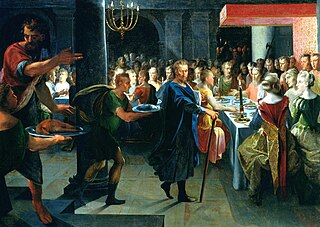 W
WFrancus is a mythological figure of Merovingian scholars which referred to a legendary eponymous king of the Franks, a descendant of the Trojans, founder of the Merovingian dynasty and forefather of Charlemagne. In the Renaissance, Francus was generally considered to be another name for the Trojan Astyanax saved from the destruction of Troy. He is not considered to be historical, but in fact an attempt by medieval and Renaissance chroniclers to model the founding of France upon the same illustrious tradition as that used by Virgil in his Aeneid.
 W
WFuxi or Fu Hsi is a culture hero in Chinese legend and mythology, credited along with his sister and wife Nüwa with creating humanity and the invention of music, hunting, fishing, domestication, and cooking as well as the Cangjie system of writing Chinese characters around 2,000 BCE. Fuxi was counted as the first of the Three Sovereigns at the beginning of the Chinese dynastic period.
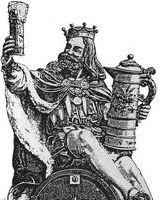 W
WGambrinus is a legendary European culture hero celebrated as an icon of beer, brewing, joviality, and joie de vivre. Traditional songs, poems, and stories describe him as a king, duke, or count of Flanders and Brabant. Typical representations in the visual arts depict him as a rotund, bearded duke or king, holding a tankard or mug, and sometimes with a keg nearby.
 W
WGudit is the Classical Ethiopic name for a personage also known as Yodit in Tigray, Isato in Amharic and Ga'wa in Ţilţal, and refers to a legendary queen of a putative Kingdom of Semien who, according to a late tradition, laid waste the Kingdom of Aksum and its countryside, destroyed churches and monuments, and attempted to exterminate the members of the ruling dynasty. The deeds attributed to her are recorded in oral tradition and in a variety of historical narratives.
 W
WHarishchandra is a legendary Indian king of the Ikshvaku dynasty, who appears in several legends in texts such as Aitareya Brahmana, Mahabharata, the Markandeya Purana, and the Devi-Bhagavata Purana. The most famous of these stories is the one mentioned in Markandeya Purana. According to this legend, Harishchandra gave away his kingdom, sold his family and agreed to be a slave – all to fulfill a promise he had made to the sage Vishwamitra.
 W
WThe Heavenly Sovereign was the first Chinese legendary king after Pangu’s era. According to Yiwen Leiju, he was the first of the Three Sovereigns.
 W
WThe Human Sovereign, otherwise called the Sovereign of Man, was the third Chinese legendary king after Pangu's era. According to Yiwen Leiju, he was the third and last of the Three Sovereigns.
 W
WEmperor Jimmu was the legendary first emperor of Japan according to the Nihon Shoki and Kojiki. His accession is traditionally dated as 660 BC. In Japanese mythology, he was a descendant of the sun goddess Amaterasu, through her grandson Ninigi, as well as a descendant of the storm god Susanoo. He launched a military expedition from Hyuga near the Seto Inland Sea, captured Yamato, and established this as his center of power. In modern Japan, Jimmu's legendary accession is marked as National Foundation Day on February 11.
 W
WJizi or Qizi or Kizi was a semi-legendary Chinese sage who is said to have ruled Gija Joseon in the 11th century BCE. Early Chinese documents like the Book of Documents and the Bamboo Annals described him as a virtuous relative of the last king of the Shang dynasty who was punished for remonstrating with the king. After Shang was overthrown by Zhou in the 1040s BCE, he allegedly gave political advice to King Wu, the first Zhou king. Chinese texts from the Han dynasty onwards claimed that King Wu enfeoffed Jizi as ruler of Chaoxian. According to the Book of Han, Jizi brought agriculture, sericulture, and many other facets of Chinese civilization to Joseon.
 W
WKù, usually referred to as Dì Kù, also known as Gaoxin or Gāoxīn Shì, was a descendant of the Yellow Emperor. He went by the name Gaoxin until receiving imperial authority, when he took the name Ku and the title Di, thus being known as Di Ku. He is considered the ancestor of the ruling families of certain subsequent dynasties. Some sources treat Ku as a semi-historical figure, while others make fantastic mythological or religious claims about him. Besides varying in their degree of historicizing Ku, the various sources also differ in what specific stories about him they focus on, so that putting together the various elements of what is known regarding Ku results in a multifaceted story. Di Ku was one of the Five Emperors of the Three Sovereigns and Five Emperors of Chinese mythology. Ku, or Gaoxin, is also known as the "White Emperor".
 W
WThe Legends of Africa reflect a wide-ranging series of kings, queens, chiefs and other leaders from across the African continent including Mali, Benin, Ghana, Nigeria, Congo, Ethiopia, Eritrea and South Africa.
 W
WMerovech was the King of the Salian Franks, which later became the dominant Frankish tribe, and the founder of the Merovingian dynasty. Several legends and myths surround his person. He is proposed to be one of several barbarian warlords and kings that joined forces with the Roman general Aetius against the Huns under Attila at the Battle of the Catalaunian Plains in Gaul in 451. His grand-son Clovis I became the founder of the Frankish kingdom.
 W
WNavaghana was an early Chudasama king known only from the ballads and folklore of Saurashtra region of Gujarat, India. His capital was at Vamanasthali which he later moved to Junagadh during his last years of reign.
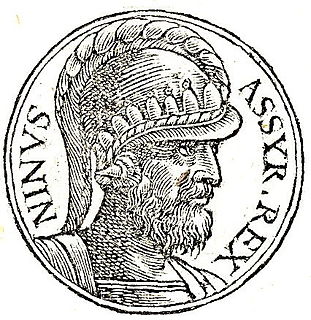 W
WNinus, according to Greek historians writing in the Hellenistic period and later, was the mythical founder of Nineveh, ancient capital of Assyria. His name is not attested on the Assyrian King List or in any cuneiform literature; he does not seem to represent any one personage known to modern history, and is more likely a conflation of several real and/or fictional figures of antiquity, as seen to the Greeks through the mists of time.
 W
WNüwa, also read Nügua, is the mother goddess of Chinese mythology, the sister and wife of Fuxi, the emperor-god. She is credited with creating humanity and repairing the Pillar of Heaven.
 W
WPřemysl the Ploughman was the legendary husband of Libuše, and ancestor of the Přemyslid dynasty, containing the line of princes (dukes) and kings which ruled in the Lands of the Bohemian Crown from 873 or earlier until the murder of Wenceslaus III in 1306.
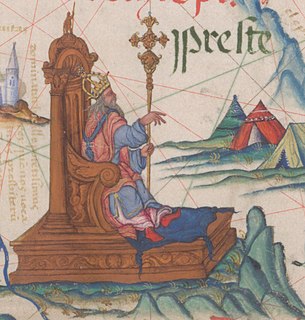 W
WPrester John was a legendary Christian patriarch, presbyter, and king. Stories popular in Europe in the twelfth through to the seventeenth centuries told of a Nestorian patriarch and king who was said to rule over a Christian nation lost amid the pagans and Muslims in the Orient. The accounts are varied collections of medieval popular fantasy, depicting Prester John as a descendant of the Three Magi, ruling a kingdom full of riches, marvels, and strange creatures.
 W
WRadu Negru, also known as Radu Vodă or Negru Vodă, is the legendary founder of Wallachia.
 W
WRyngold or Ringaudas was a mythological Grand Duke of Lithuania from the Palemonids legends and supposed father of Mindaugas, the first King of Lithuania (1251–1263). In fact there is nothing known about Mindaugas' father from reliable sources. The Livonian Rhymed Chronicle, a contemporary source, just mentions that he was a powerful duke, but does not provide his name.
 W
WShaohao or Shao Hao, also known Jin Tian (金天), was a legendary Chinese sovereign who reigned c. 2600 BC. Shaohao is usually identified as a son of the Yellow Emperor. According to some traditions, he is a member of the Five Emperors.
 W
WEmperor Shun was a legendary leader of ancient China, regarded by some sources as one of the Three Sovereigns and Five Emperors being the last of the Five Emperors. Tradition holds that he lived sometime between 2294 and 2184 BC. Tradition also holds that those with surname Chen (陈) are descendants of Emperor Shun. The Duke Hu of Chen, a descendant of Shun, became the founder of the State of Chen. Later Chen dynasty emperors such as Chen Baxian would also claim descent from Shun.
 W
WSuiren appears in Chinese mythology and some works which draw upon it. Suiren is credited as a culture hero who introduced humans to the production of fire and its use for cooking. He was included on some ancient lists of the legendary Three August Ones, who lived long before Emperor Yao, Emperor Shun, and the emperors of the earliest historical Chinese dynasty (Xia), and even before the Yellow Emperor & Yandi. Suiren’s innovation may have been the bow drill which dates back at least to the Indus Valley Civilization. Tradition holds that he ruled over China for 110 years.
 W
WTrebeta was the legendary founder of Trier according to the Gesta Treverorum.
 W
WTyushtya - is a Mokshan epic hero character based on Moksha legends, which mostly survived among Mokshas living in on the right bank of Volga and in Siberia. He serves as a symbol of Moksha's struggle with Russian expansion. Tyushtya is also regarded as the great leader of the Moksha, Erzya and Meschera alliance.
 W
WWidewuto was a legendary king of the pagan Prussians who ruled along with his elder brother, the high priest (Kriwe-Kriwajto) Bruteno in the 6th century AD. They are known from writings of 16th-century chroniclers Erasmus Stella, Simon Grunau, and Lucas David. Though the legend lacks historical credibility, it became popular with medieval historians. It is unclear whether the legend was authentically Prussian or was created by Grunau, though Lithuanian researchers tend to support its authenticity.
 W
WThe Yan Emperor or the Flame Emperor was a legendary ancient Chinese ruler in pre-dynastic times. Modern scholarship has identified the Sheep's Head Mountains just north of Baoji in Shaanxi Province as his homeland and territory.
 W
WEmperor Yao was a legendary Chinese ruler, according to various sources, one of the Three Sovereigns and Five Emperors.
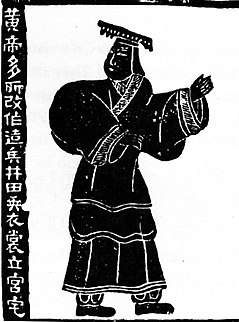 W
WThe Yellow Emperor, also known as the Yellow Thearch, or by his Chinese name Huangdi, is a deity (shen) in Chinese religion, one of the legendary Chinese sovereigns and culture heroes included among the mytho-historical Three Sovereigns and Five Emperors and cosmological Five Forms of the Highest Deity. Calculated by Jesuit missionaries on the basis of Chinese chronicles and later accepted by the twentieth-century promoters of a universal calendar starting with the Yellow Emperor, Huangdi's traditional reign dates are 2697–2597 or 2698–2598 BCE.
 W
WYu the Great (大禹) was a legendary king in ancient China who was famed for his introduction of flood control, his establishment of the Xia dynasty which inaugurated dynastic rule in China, and his upright moral character. He figures prominently in the Chinese legend of "Great Yu Who Controlled the Waters".
 W
WZhuanxu, also known as Gaoyang, was a mythological emperor of ancient China.